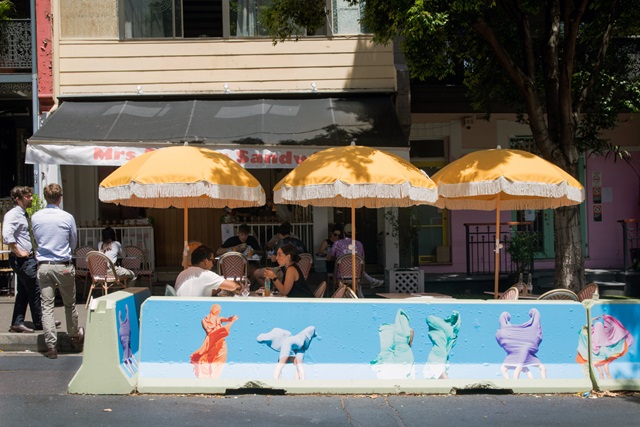City of Sydney
- GPO Box 1591Sydney 2001
- 02 9265 9333
- [email protected]
Transform your on-street dining area.
To help enliven our city and support Sydney’s hospitality businesses through the Covid-19 pandemic, we worked with the NSW Government to provide more outdoor dining opportunities.
From 30 November 2020, we trialled new on-street dining permits. Cafes, bars, restaurants and theatres can apply to take over car parking space for outdoor dining areas. Due to the popularity of the on-street dining spaces, we continue this support for businesses by extending on-street dining until 31 December 2024 and investigating opportunities to make some of these spaces permanent.
Rather than leave the necessary concrete safety barriers bare, we’re trialling the use of artwork by 10 contemporary Australian artists and design studios. We originally licenced the artworks for our creative hoardings program because our communities wanted to see more art on the streets. And we want to provide artists more opportunities to showcase their work in very visible locations.
All of the following artists and design studios are available for commissions. If you like their work, get in touch with them and let them know.

Cultural support & funding
Creative hoardings program